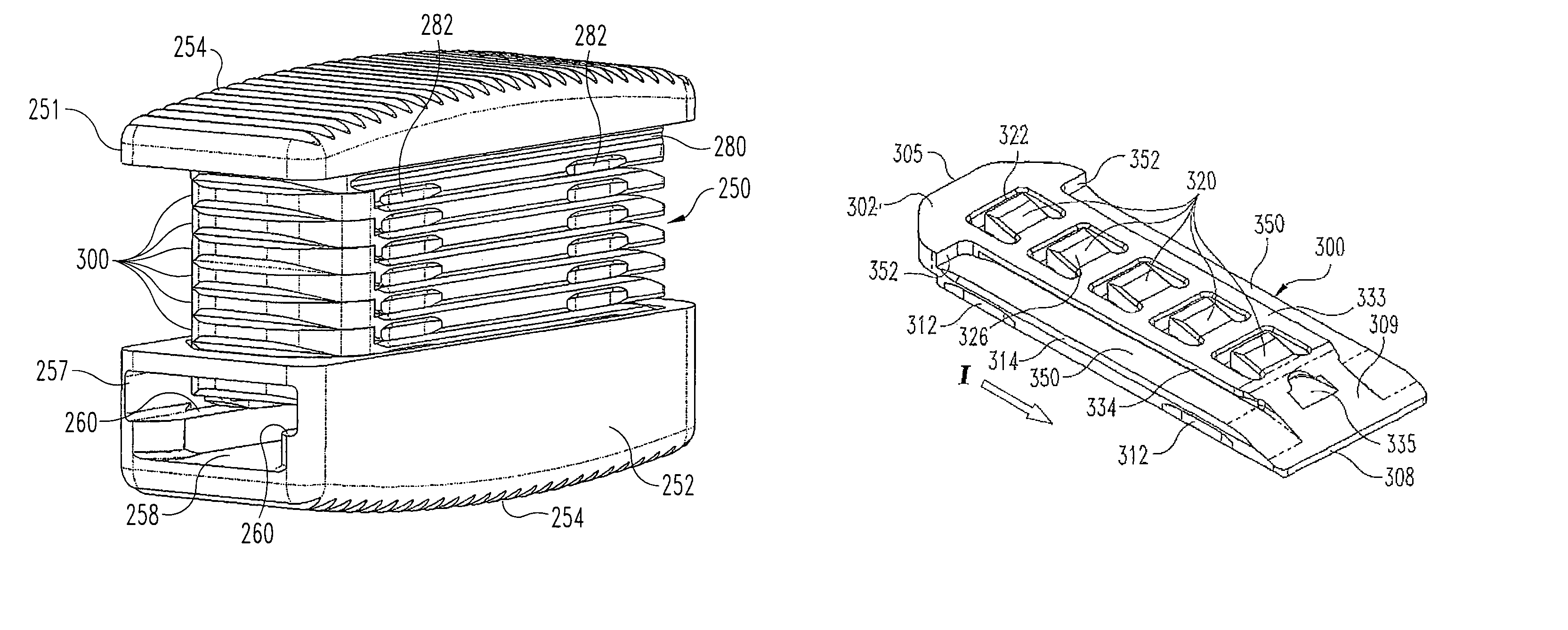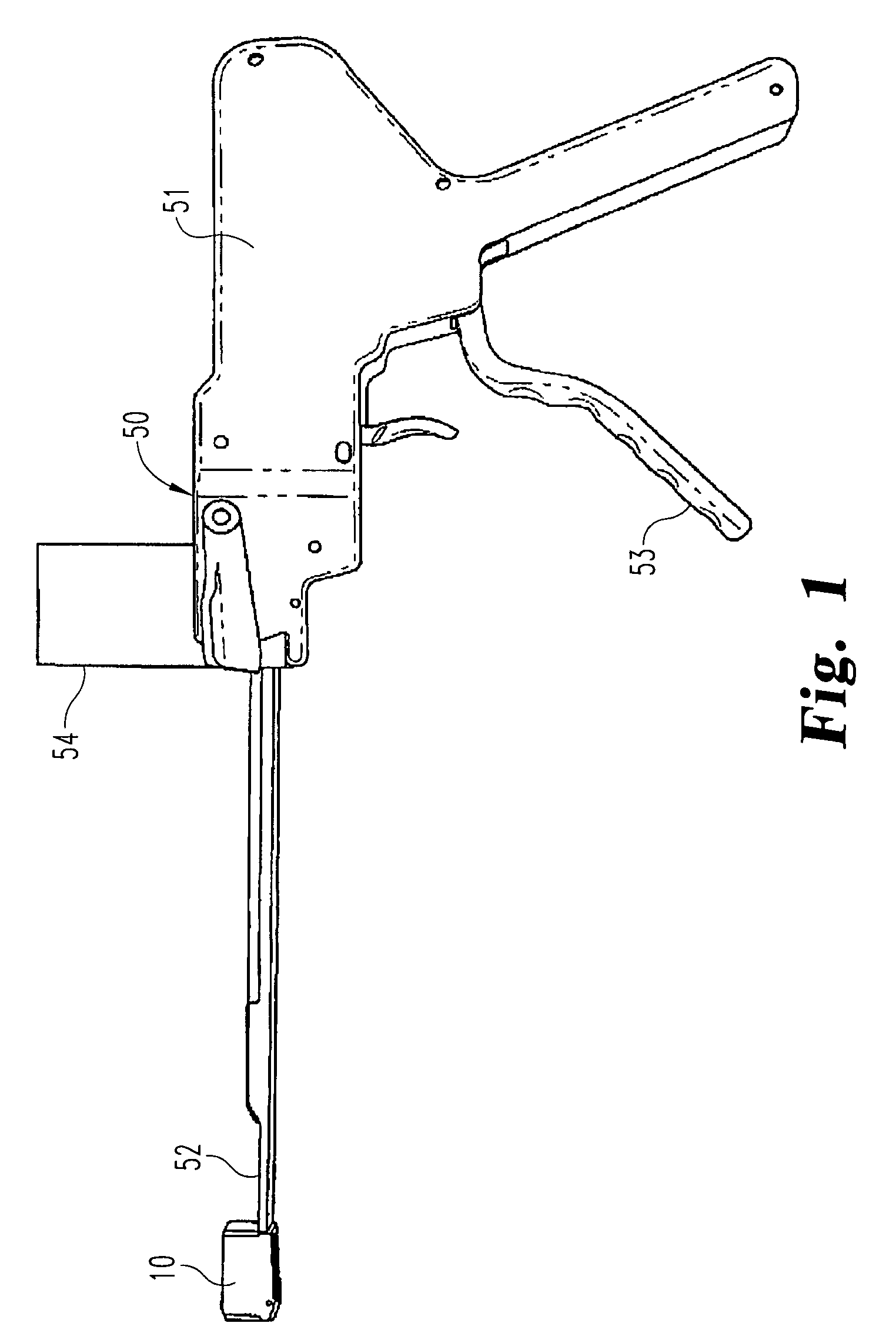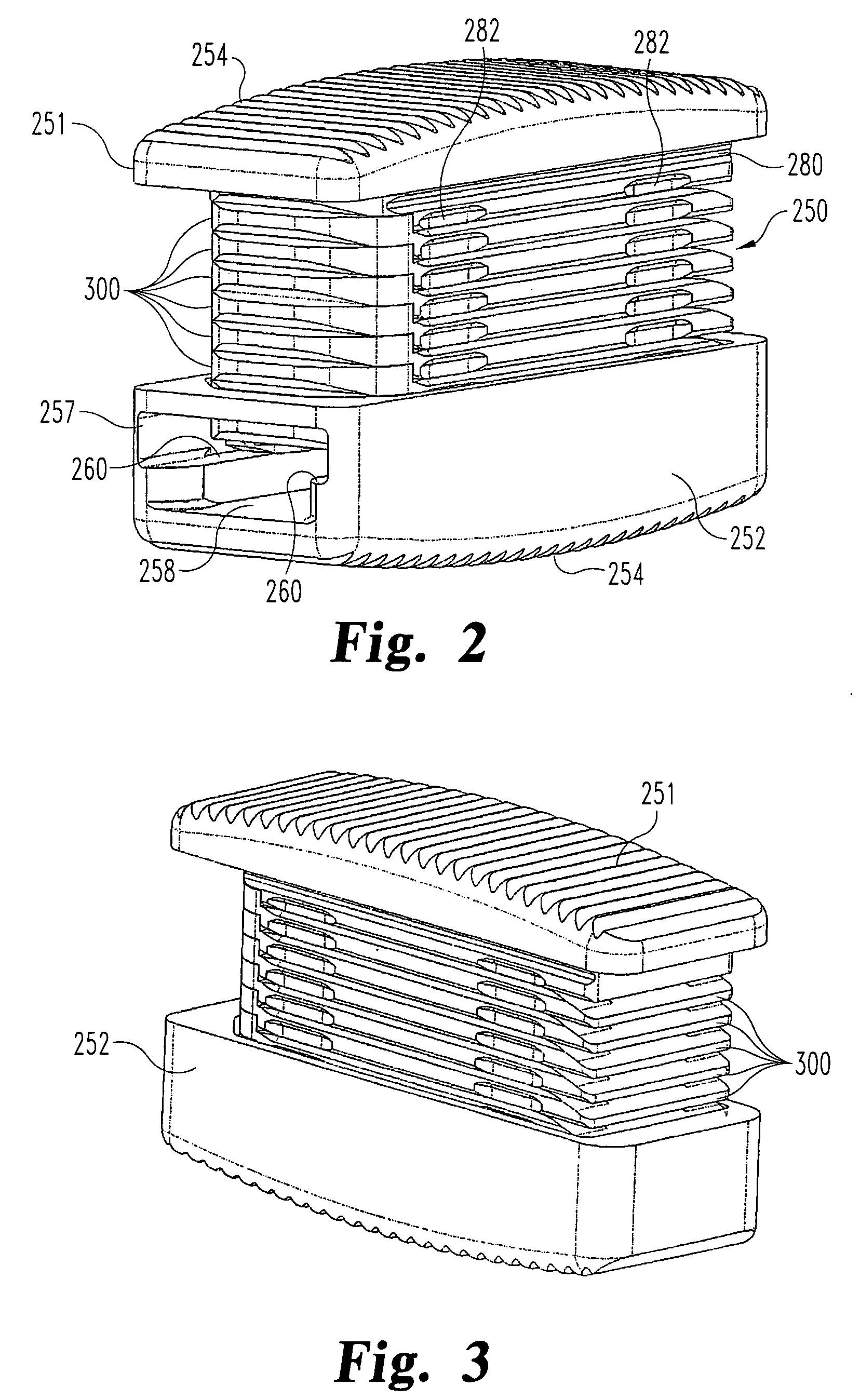Expandable interbody fusion device
a fusion device and expandable technology, applied in the field of expandable interbody fusion devices, can solve the problems of affecting the inability to implant a rod or plate during fusion, and the inability to maintain the stability of the fusion level, so as to prevent the disengagement of the wafer
- Summary
- Abstract
- Description
- Claims
- Application Information
AI Technical Summary
Benefits of technology
Problems solved by technology
Method used
Image
Examples
Embodiment Construction
[0037]For the purposes of promoting an understanding of the principles of the invention, reference will now be made to the embodiments illustrated in the drawings and described in the following written specification. It is understood that no limitation to the scope of the invention is thereby intended. It is further understood that the present invention includes any alterations and modifications to the illustrated embodiments and includes further applications of the principles of the invention as would normally occur to one skilled in the art to which this invention pertains.
[0038]The present invention contemplates an improved interlocking wafer, and particularly a wafer configuration that firmly and permanently interlocks a stack wafers inside an expandable distraction device, even when subjected to normal spinal loads. In accordance with one embodiment of the invention, an expandable distraction device 250 is provided, as shown in FIGS. 2-5, which includes a stack of interlocking ...
PUM
 Login to View More
Login to View More Abstract
Description
Claims
Application Information
 Login to View More
Login to View More - R&D
- Intellectual Property
- Life Sciences
- Materials
- Tech Scout
- Unparalleled Data Quality
- Higher Quality Content
- 60% Fewer Hallucinations
Browse by: Latest US Patents, China's latest patents, Technical Efficacy Thesaurus, Application Domain, Technology Topic, Popular Technical Reports.
© 2025 PatSnap. All rights reserved.Legal|Privacy policy|Modern Slavery Act Transparency Statement|Sitemap|About US| Contact US: help@patsnap.com



